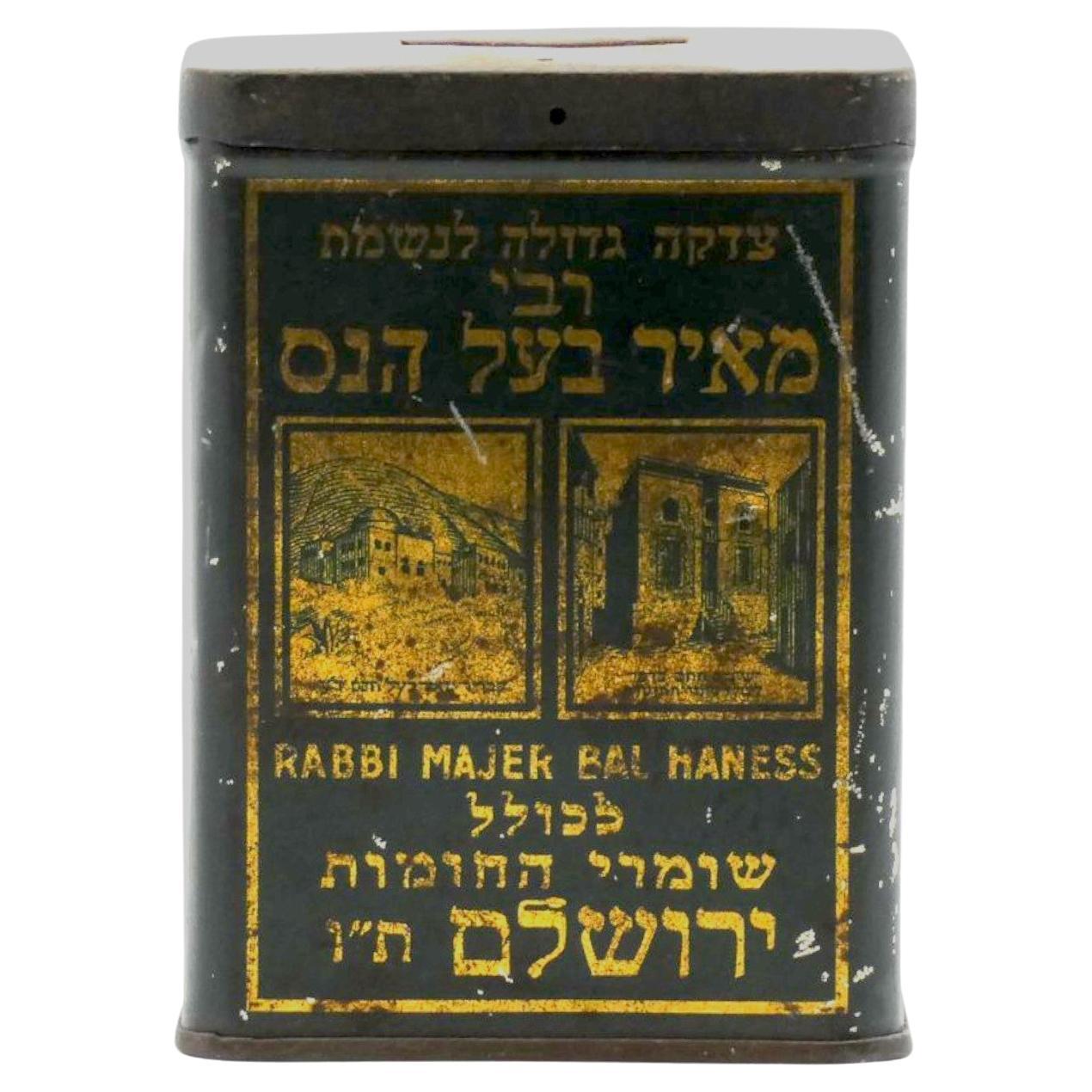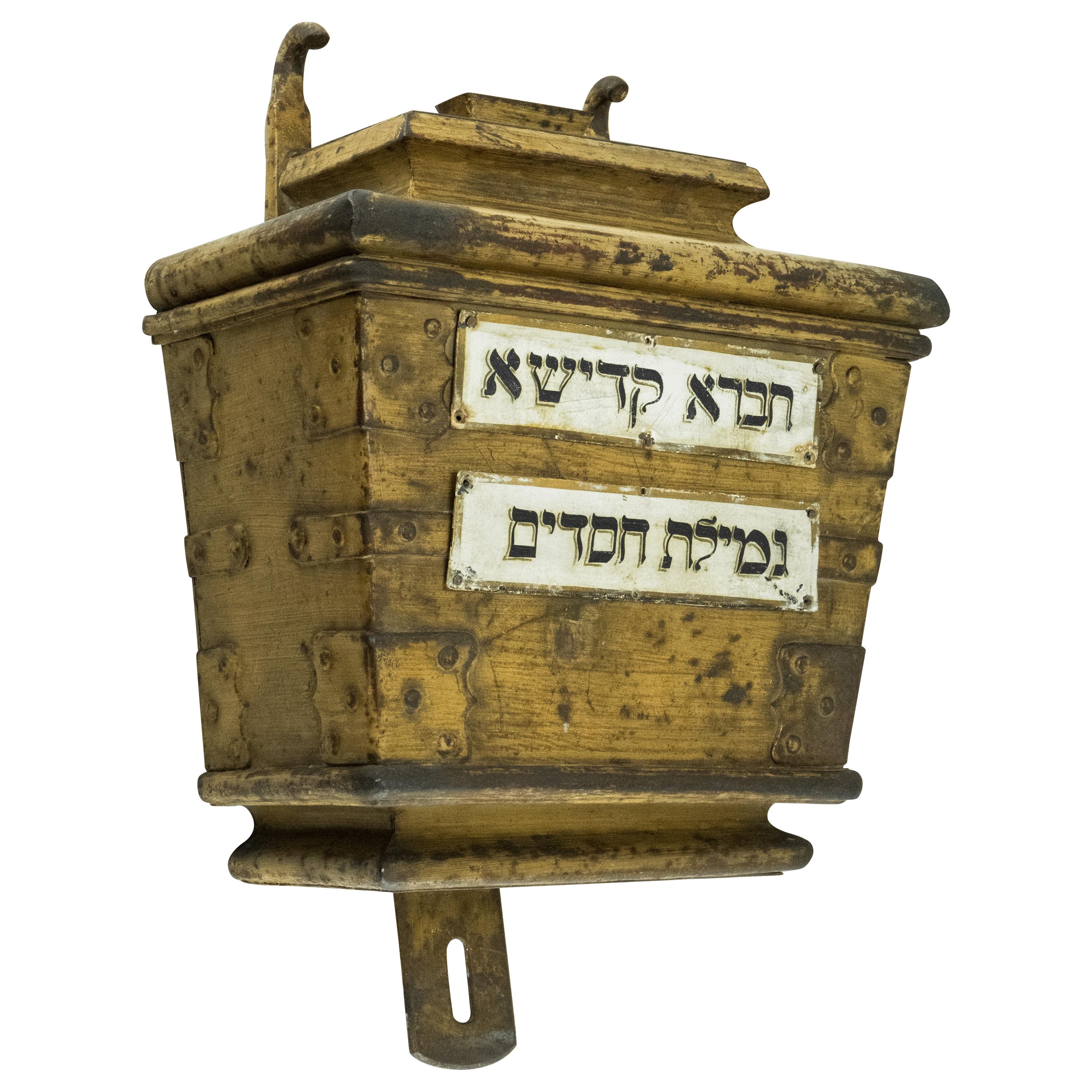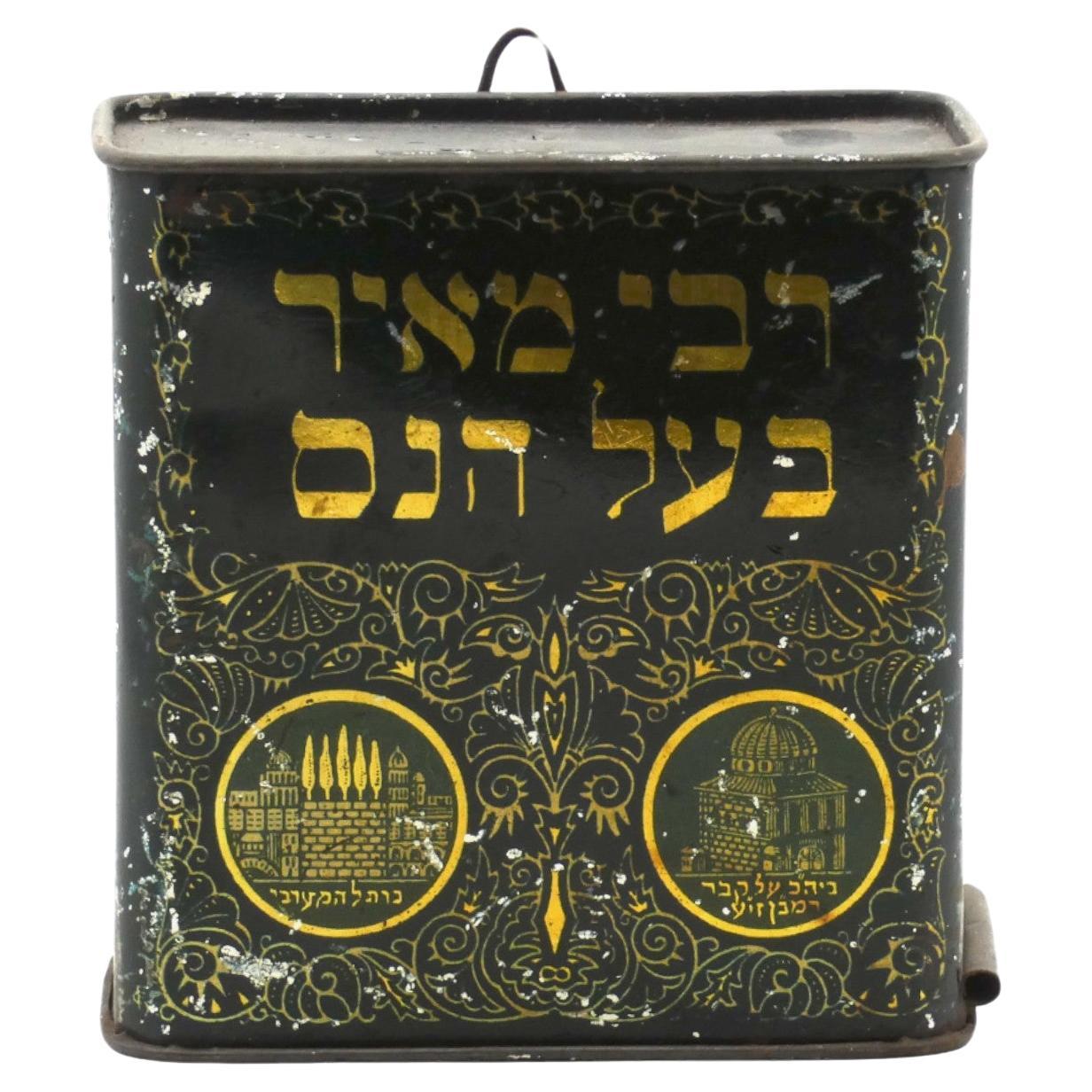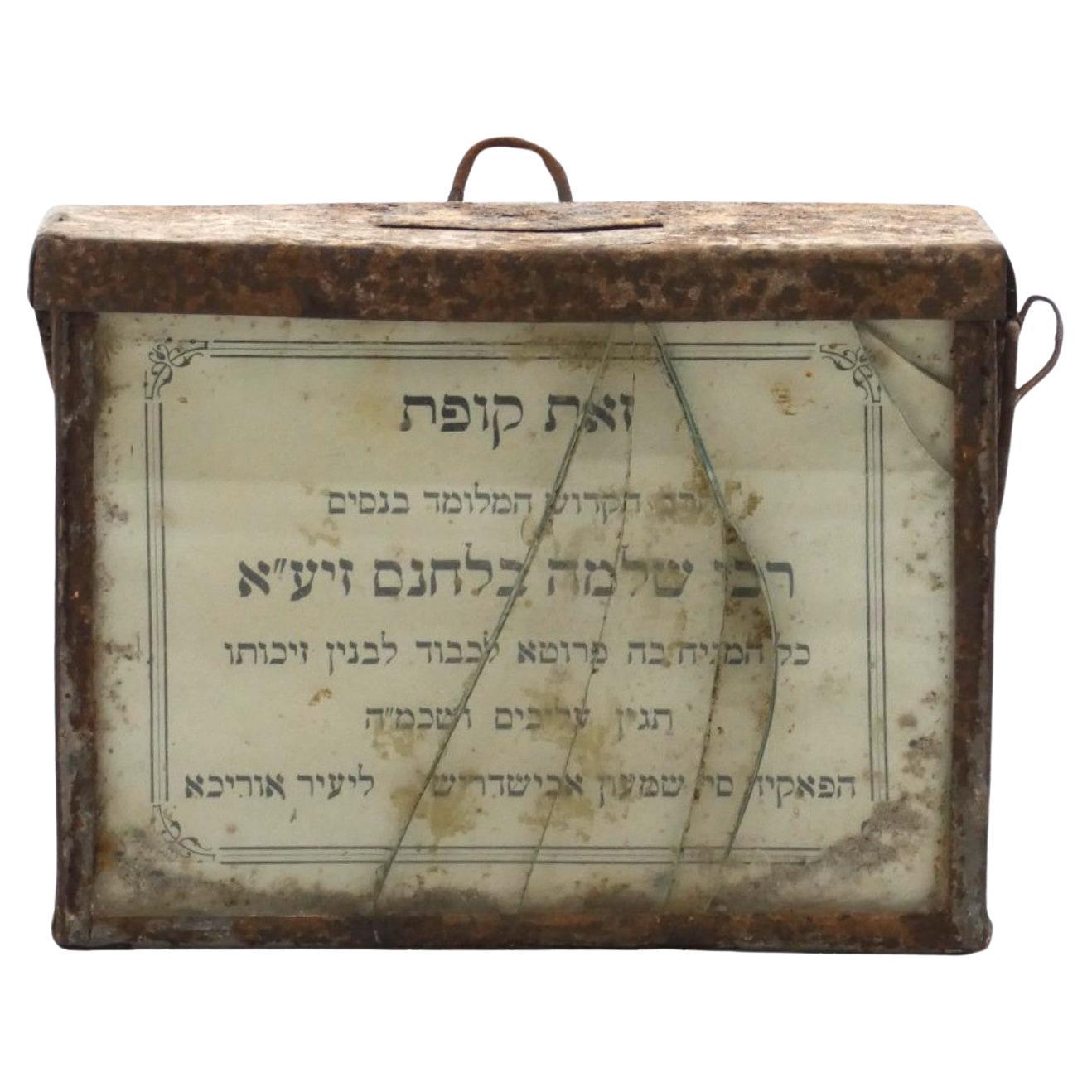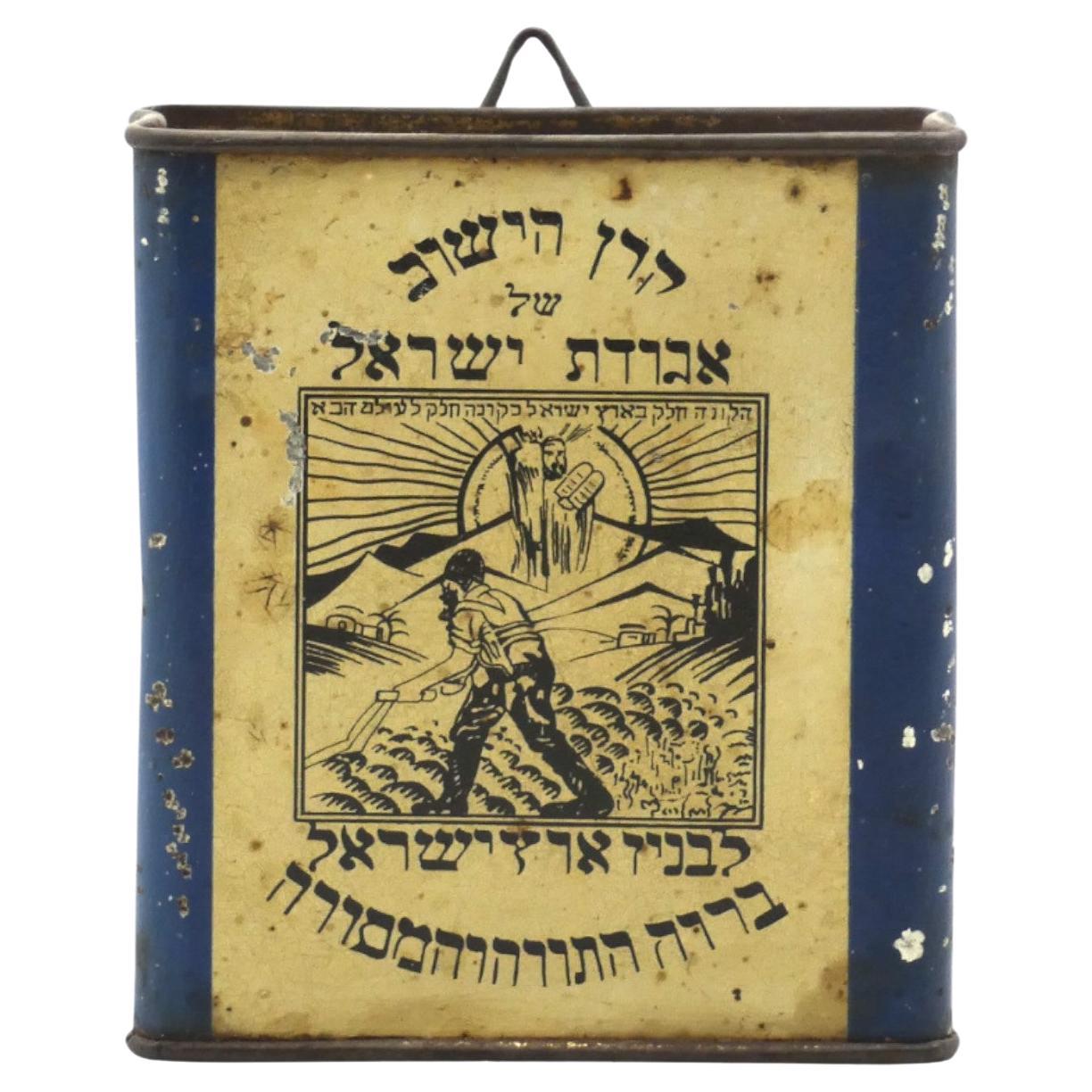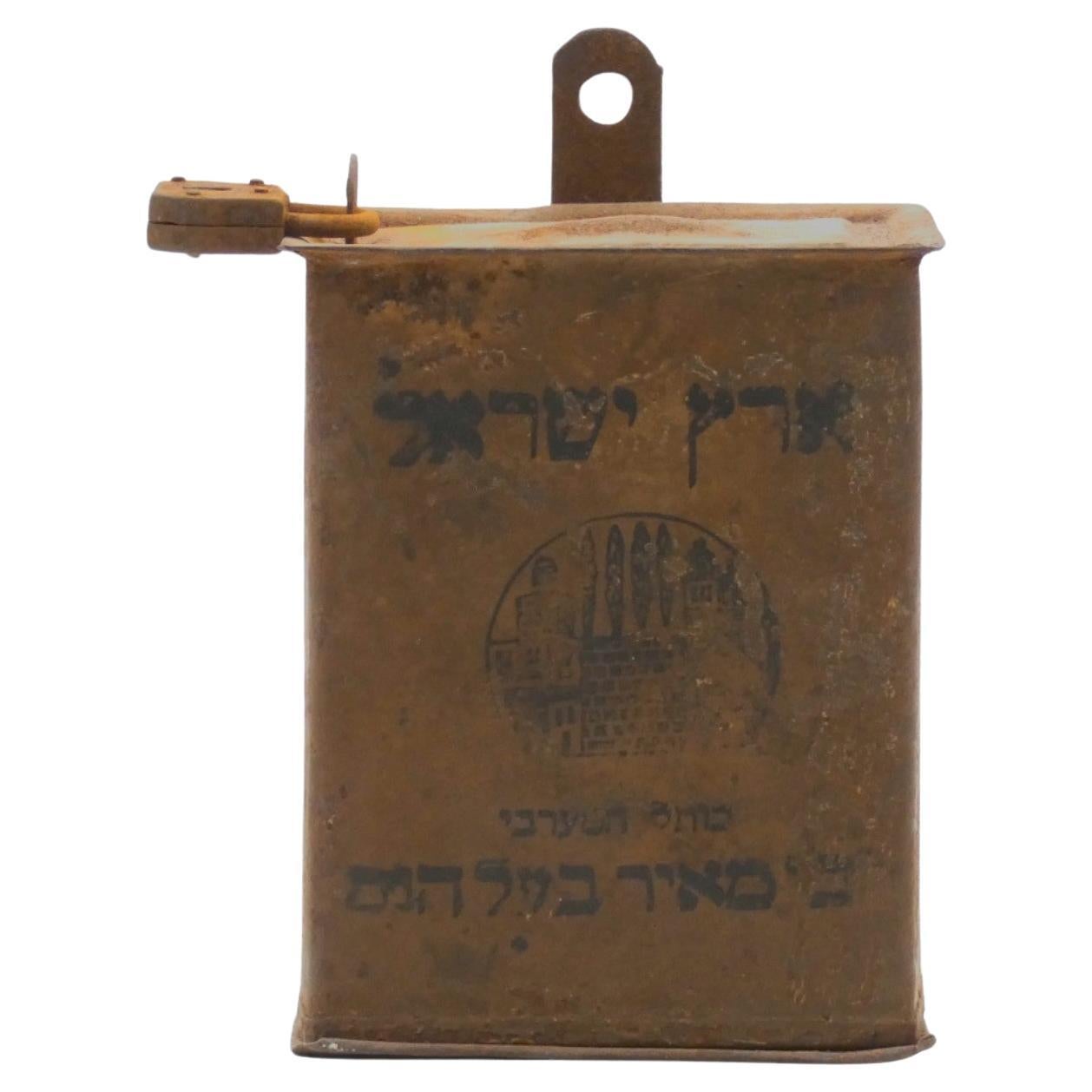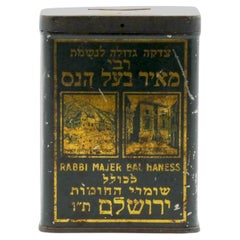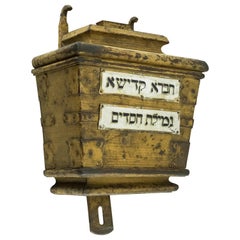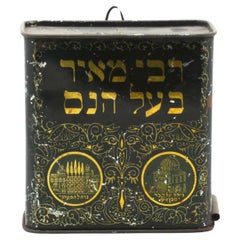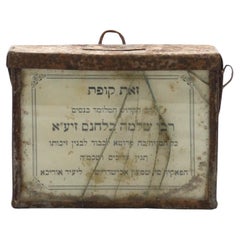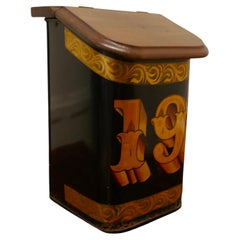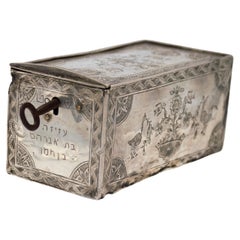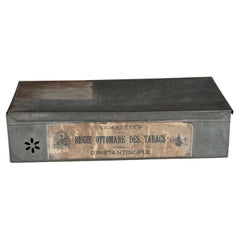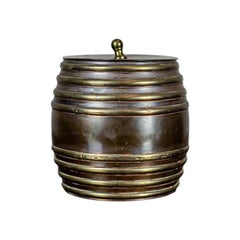Items Similar to A Hungarian Tin Charity Container late 19th Century
Want more images or videos?
Request additional images or videos from the seller
1 of 7
A Hungarian Tin Charity Container late 19th Century
$2,240
$2,80020% Off
£1,700.57
£2,125.7120% Off
€1,945.09
€2,431.3620% Off
CA$3,129.60
CA$3,912.0120% Off
A$3,480.80
A$4,35120% Off
CHF 1,817.57
CHF 2,271.9620% Off
MX$42,357.68
MX$52,947.1020% Off
NOK 23,213.11
NOK 29,016.3920% Off
SEK 21,769.80
SEK 27,212.2520% Off
DKK 14,516.95
DKK 18,146.1820% Off
Shipping
Retrieving quote...The 1stDibs Promise:
Authenticity Guarantee,
Money-Back Guarantee,
24-Hour Cancellation
About the Item
A Rare Hungarian Tin Charity Container made in the late 19th Century.
Charity box has a latched cover at the top and a plaque informing the people who donate to the box which organization they are donating to.
Plaque at the top written in Hungarian translates to
" AHAVASZ REIM" (Love of your fellow man)
"National People's Love Association for the Ritual Healing of the Public Poor and Aged Patients, and for Maintaining their Homes "
"מתן בסתר" ( giving in secret).
Hanging ring placed at the top was used for hanging this box in a synagogue or a public place people frequented.
- Dimensions:Height: 5.32 in (13.5 cm)Width: 1.78 in (4.5 cm)Depth: 3.55 in (9 cm)
- Materials and Techniques:
- Place of Origin:
- Period:
- Date of Manufacture:late 19th century
- Condition:Wear consistent with age and use.
- Seller Location:New York, NY
- Reference Number:1stDibs: LU5281239770652
About the Seller
5.0
Recognized Seller
These prestigious sellers are industry leaders and represent the highest echelon for item quality and design.
Established in 2006
1stDibs seller since 2020
130 sales on 1stDibs
Typical response time: 1 to 2 days
- ShippingRetrieving quote...Shipping from: Pomona, NY
- Return Policy
Authenticity Guarantee
In the unlikely event there’s an issue with an item’s authenticity, contact us within 1 year for a full refund. DetailsMoney-Back Guarantee
If your item is not as described, is damaged in transit, or does not arrive, contact us within 7 days for a full refund. Details24-Hour Cancellation
You have a 24-hour grace period in which to reconsider your purchase, with no questions asked.Vetted Professional Sellers
Our world-class sellers must adhere to strict standards for service and quality, maintaining the integrity of our listings.Price-Match Guarantee
If you find that a seller listed the same item for a lower price elsewhere, we’ll match it.Trusted Global Delivery
Our best-in-class carrier network provides specialized shipping options worldwide, including custom delivery.More From This Seller
View AllA Tin Charity Container, Belgium Early 20th Century
Located in New York, NY
A tin charity container for Kollel Shomrei HaChomot in Belgium from the early 20th century was used to collect donations for this religious institution comprising several schools, an...
Category
Early 20th Century Belgian Religious Items
Materials
Tin
$1,200 Sale Price
20% Off
19th Century Hungarian Synagogue Iron Charity Container
Located in New York, NY
Large handmade iron charity container, Hungary, circa 1850.
The iron tzedakah box was installed within the wall at the Hungarian Synagogue.
On the fr...
Category
Antique Mid-19th Century Hungarian Religious Items
Materials
Iron
$15,024 Sale Price
20% Off
A Rabbi Meir Ba'al Haness Charity Container, Israel Circa 1920
Located in New York, NY
A Rabbi Meir Ba'al Haness charity container from Israel circa 1920 is an artifact associated with Jewish religious devotion and charitable traditions.
Rabbi Meir Ba'al Haness, also ...
Category
Vintage 1920s Israeli Religious Items
Materials
Tin
$1,440 Sale Price
20% Off
A Moroccan Charity Container, Circa 1920
Located in New York, NY
This Moroccan charity container from around 1920 is a unique artifact that represents the containers that were often used for collecting donations or contributions for various charit...
Category
Vintage 1920s Moroccan Religious Items
Materials
Tin
$2,000 Sale Price
20% Off
A Keren Hayeshuv Charity Container, Israel Circa 1940
Located in New York, NY
A Keren Hayeshuv charity container from Israel circa 1940 is an artifact tied to the early years of the State of Israel and its efforts to support Jewish settlement and development.
Keren Hayeshuv, which translates to "The Settlement Fund," was an organization established in Israel during the pre-statehood period and continued its activities after the establishment...
Category
Vintage 1940s Israeli Religious Items
Materials
Tin
A Metal Israeli Kotel Charity Container, 1910
Located in New York, NY
A Rare Metal Israeli Kotel charity container for Rabbi Meir Baal Haness from 1910 tied to Jewish religious and charitable traditions.
Rabbi Meir Baal Haness, also known as Rabbi M...
Category
Vintage 1910s Israeli Religious Items
Materials
Metal
$2,000 Sale Price
20% Off
You May Also Like
19th Century Toleware Grocer’s Shop Tea Tin
Located in Godshill, Isle of Wight
19th century toleware grocer’s shop tea tin,
A beautiful decorative Grocers Tea Canister, it would have been filled with Tea for sale, it has a very attractive style. The lid is...
Category
Antique Late 19th Century Arts and Crafts Tea Caddies
Materials
Tin
extremely rare Algerian Judaica silver, jewish Dowry box early 19th century
Located in Tel Aviv - Jaffa, IL
Amazing and scarce JUDAICA object, we have here one of the most touching jewish objects we had for a long time, this small silver dowry box was made in Algeria in the early 19th century, it is all covered with symbols of jewish faith and of couples, the sliding lid has 2 flanking birds with hamsa (protective hand) on each side and a flower vase in the middle.
one side shows two flanking lions with a tree in the middle and the other side shows again two big and two small birds with a flower bowl in the middle, front side has a key hole and next to it there is the Hebrew inscription ס״ט״" which says Siman tov or in English "a good sign" it is taken from the wedding blessing, underneath the lock there is another inscription with the name ״עזיזה בת אברהם בן חמו״ which is the name of the bride, her father and her grandfathers name.
the box is full marked a lot of times with the silversmith mark, every side of the box is marked.
this box was probably ordered by the grooms family to hold the jewelry they are giving to the bride as dowry, this type of objects are rare and there are just a few of them on museum collections.
DOWRY (Heb. נְדֻנְיָה), the property a wife brings to her husband at marriage; the Yiddish equivalent, nadn, is from the same root. The custom of nedunyah became clearly defined and institutionalized only in the talmudic period. In biblical times, mohar (מֹהַר), whereby the groom bought his wife from her father (Gen. 24:53; Ex. 22:15–16; Hos. 3:2), was the accepted practice. It was then customary that the groom give the bride gifts, and that she bring certain property to her husband's home upon marriage: slaves, cattle, real estate, etc. (cf. Gen. 24:59–61; 29; Judg. 1:14ff.; I Kings 9:16). Evidence of the custom of nedunyah is to be found in Tobit (7:14; 8:21) and in the Assuan papyri (Cowley, Aramaic, nos. 15, 18). Gradually, mohar was superseded by the ketubbah custom according to which the husband merely assumed the responsibility of compensation to his wife in case he divorced her: he had to pay her 200 zuzim if she had been a virgin at the time of marriage, and 100 zuzim if a widow or divorcée (see *Ketubbah).
By talmudic times, the institution of nedunyah was prevalent; the father gave a dowry to the bride since the daughter was excluded from paternal inheritance. Fifty zuzim (equivalent to the worth of 180 grams of silver) was the minimum amount a father was obliged to give to his daughter (Ket. 6:5). Parents usually gave much more, according to their social standing. Community funds provided the dowry for an orphan or a very poor girl (ibid.; cf. Sh. Ar., YD 251:8). In case of her father's death, the brothers of a minor girl were obliged to give her the minimum dowry, and the court estimated how much her father would have given her above the minimum dowry. The sum was then taken out of the father's estate and given to the daughter upon majority (Ket. 6:6; 68a–69b). In the absence of such an estimate, each daughter was entitled to receive one-tenth of the value of her father's estate in money, or in valuables (Yad, Ishut, 20:4–7; Sh. Ar., EH 113:4). If the father was unable or unwilling to pay the promised dowry at the betrothal ceremony, the groom could refuse to marry his bride (Ket. 13:5; Ket. 108b–109a). Insistence on exact payment of the promised dowry, however, was frowned upon by later rabbinic authorities (Rema to Sh. Ar., EH 2:1). In certain communities it was customary for the groom's father to make a dowry contribution equal to that of the bride's father (Ket. 102b). The dowry, whether given in real estate, slaves, money, or chattel was recorded in the marriage contract (the ketubbah) and in some instances one-third or one-fifth of the actual value of the dowry was added to the sum mentioned in the ketubbah. Based upon a decree enacted by *Simeon b. Shetah (first century C.E.), the Talmud ruled that the husband and his entire property were liable for compensation as stipulated in the ketubbah, either in case he died (when she collected the sum specified in the ketubbah from the heirs) or in case he divorced his wife (Ket. 82b). For the status of the dowry and the husband's rights and obligations, see below. The rabbinic enactments (Takkanot Shum) by R. Jacob *Tam and by the rabbinic synod of the communities of Speyer, Worms, and Mainz (Germany) stipulated that if a woman died...
Category
Antique Mid-19th Century Algerian Tribal Art
Materials
Silver
Large Antique Tobacco Tin Box, 1930s 1940s
Located in Greven, DE
Antique Tobacceo Box from France.
Category
Vintage 1930s French Decorative Boxes
Materials
Tin
20th Century Copper Snuff Box
Located in Opole, PL
We present you a snuff box in the shape of a barrel with a lid.
The item is made of copper and brass.
This snuff box in good condition. The handle is distorted.
Moreover, there ...
Category
Early 20th Century European Snuff Boxes and Tobacco Boxes
Materials
Brass, Copper
$287 Sale Price
20% Off
Stunning Nuremberg Gingerbread Candy Container, Antique German Christmas 1900s
Located in Nuernberg, DE
Amazing and rare round shaped box, hand crafted in cardboard dating from the 1910s or older. The top of the box shows i view of the Nuremberg Castle in 3d optic.
This antique box is ...
Category
Vintage 1910s German Folk Art Toys and Dolls
Materials
Composition
Arts & Crafts Coal Scuttle
Located in Whaley Bridge, GB
Sn4798 Arts & Crafts figured walnut and brass-mounted purdonium of pyramid outline, having decorative handle, hinged cover with brass corners, shovel and original liner, all in fanta...
Category
Antique 1880s English Arts and Crafts Fireplaces and Mantels
Materials
Walnut
$926 Sale Price
20% Off
More Ways To Browse
Antique Container
Antique Containers
Antique Furniture Containers
Rare Antique Tins
Tin Man
Antique Charity Box
Antique Baby Jesus
Antique Catholic Church Items
Wood Carved Crucifix
Antique Altar Cross
Antique Pewter Collectables
Oak Church Doors
Carved Tabernacle
Church Crucifix
English Bible
French Antique Font
French Reliquary
Religious Niche
